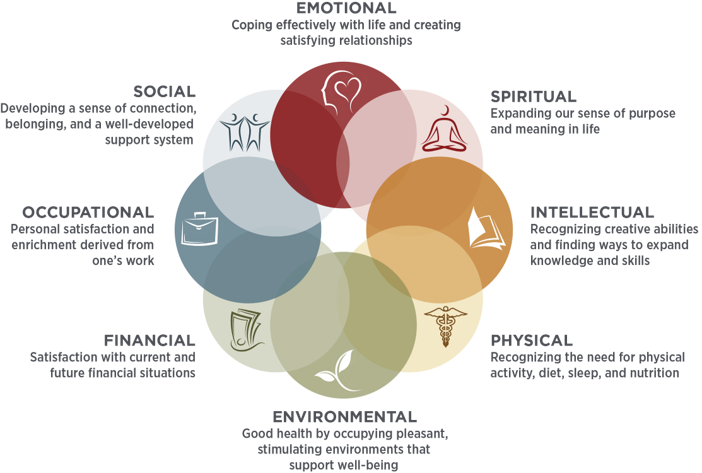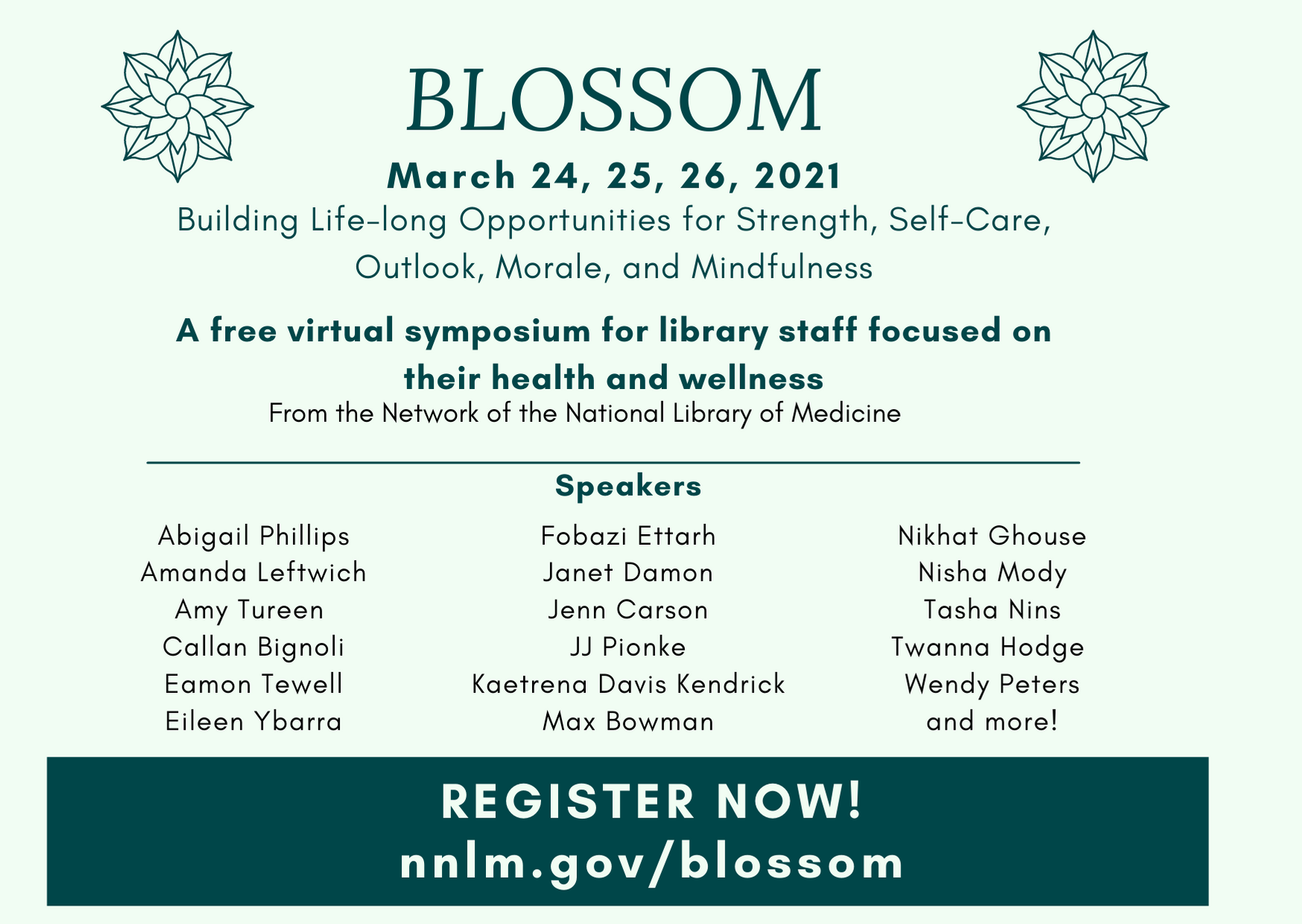A Holistic Approach to Library Staff Health and Wellness
This is the first in a new WebJunction series by Bobbi Newman, speaker, author and Community Engagement and Outreach Specialist at Network of the National Library of Medicine (NNLM), exploring library staff health and wellness.
I have attempted to start writing this column for almost a year now. Every time I sit down to write, some new Thing happens in the world and writing a column on health and wellness for library staff feels at the same time incredibly important and trivial.
About three years ago, while attending state library conferences, I recognized reoccurring themes – burnout, compassion fatigue, and self-care. Because of my position at the NNLM, I knew I could create presentations and classes addressing these themes that would be freely available to all library staff. I began developing the Wellness in the Library Workplace class. From personal experience, I understood that self-care had grown into a very profitable industry, from paid smartphone apps to $15 bath bombs. I also knew from my work around privacy that many personal practices and workplace programs had serious potential privacy issues, from location data from activity trackers to how health insurance companies might use or misuse data.
We must center our work on health and wellness for library staff with a holistic approach that does not require spending or pose privacy issues. I like this definition of health from the World Health Organization.
“Health is a state of complete physical, mental and social well-being and not merely the absence of disease or infirmity.”1
Centering health as more than the physical absence of illness opens the way to take a whole-person approach to health. Through this series, we will explore library staff's health and wellness, what libraries can and should do, and what individuals can do. There are a lot of opportunities to learn and strengthen our skills and knowledge around wellness, and I’m looking forward to sharing this column with the library community and learning about your work, too.
The Eight Dimensions of Wellness

SOURCE: SAMHSA, adapted from Swarbrick, M. (2006). A wellness approach. Psychiatric Rehabilitation Journal, 29(4), 311–314
The Eight Dimensions of Wellness were developed as part of a wellness initiative by SAMHSA based on Margaret Swarbrick's work.2 Many people think of the substance part of Substance Abuse* and Mental Health Services Administration (SAMHSA) and miss the mental health part. The eight dimensions are emotional, physical, occupational, intellectual, financial, social, environmental, and spiritual. All the dimensions overlap and build upon one another. I like this approach for several reasons. First, it focuses on many aspects that affect our physical and mental health. Second, it works to break down health into elements that can be addressed by individuals and the workplace. For example, environmental wellness on the individual level might include visiting a park or other outdoor space. At the workplace level, it could consists of an ergonomic workspace, clean air, natural light, a view of nature, and green initiatives.
SAMHSA Resources
Watch this brief video, Eight Dimensions of Wellness and read, Creating a Healthier Life: A Step-By-Step Guide to Wellness to explore the eight dimensions. We will address them and how we can apply different aspects in both our personal and professional lives in future columns.
BLOSSOM: Free Virtual Symposium
And the recordings are now available for the March 2021 online symposium, BLOSSOM - Building Life-long Opportunities for Strength, Self-Care, Outlook, Morale, and Mindfulness. A free virtual symposium for library staff focused on their health and wellness, from the Network of the National Library of Medicine.
This three-day virtual symposium brought together experts on morale, invisible services, vocational awe, burnout, and self-care in libraries. The symposium provided library staff at all levels, including management, with key takeaways to improve library staff's health and wellness. This event was open to all library staff regardless of employment status and to library science students.
Footnotes
[1] “Constitution,” World Health Organization, accessed March 4, 2020, https://www.who.int/about/governance/constitution.
[2] Swarbrick, M. (2006). A wellness approach. Psychiatric Rehabilitation Journal, 29(4), 311–314. https://doi.org/10.2975/29.2006.311.314
*Unfortunately SAMHSA has not updated its name to be less stigmatizing. Substance misuse is the preferred term when discussion addiction.3
[3] National Institute on Drug Abuse, “Words Matter - Terms to Use and Avoid When Talking About Addiction,” National Institute on Drug Abuse, https://www.drugabuse.gov/nidamed-medical-health-professionals/health-professions-education/words-matter-terms-to-use-avoid-when-talking-about-addiction.

